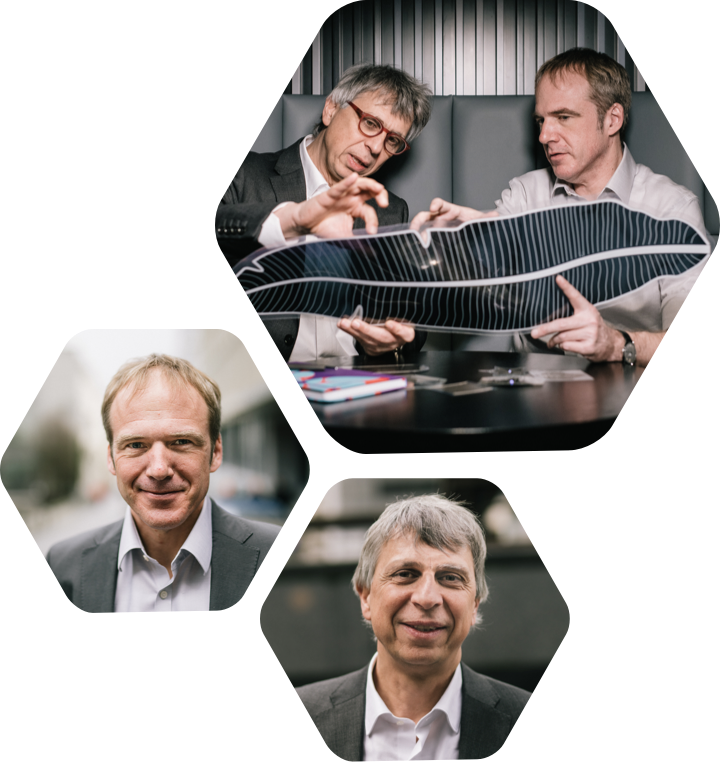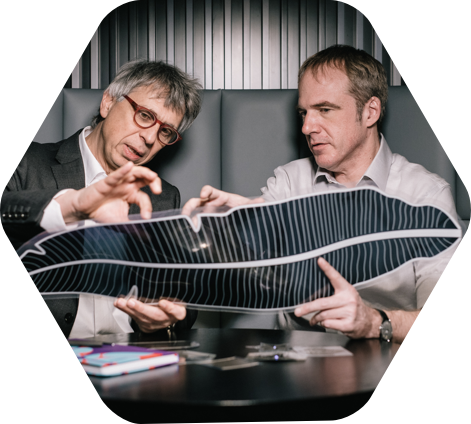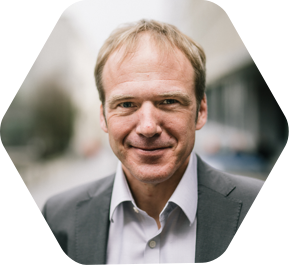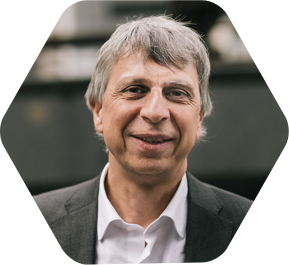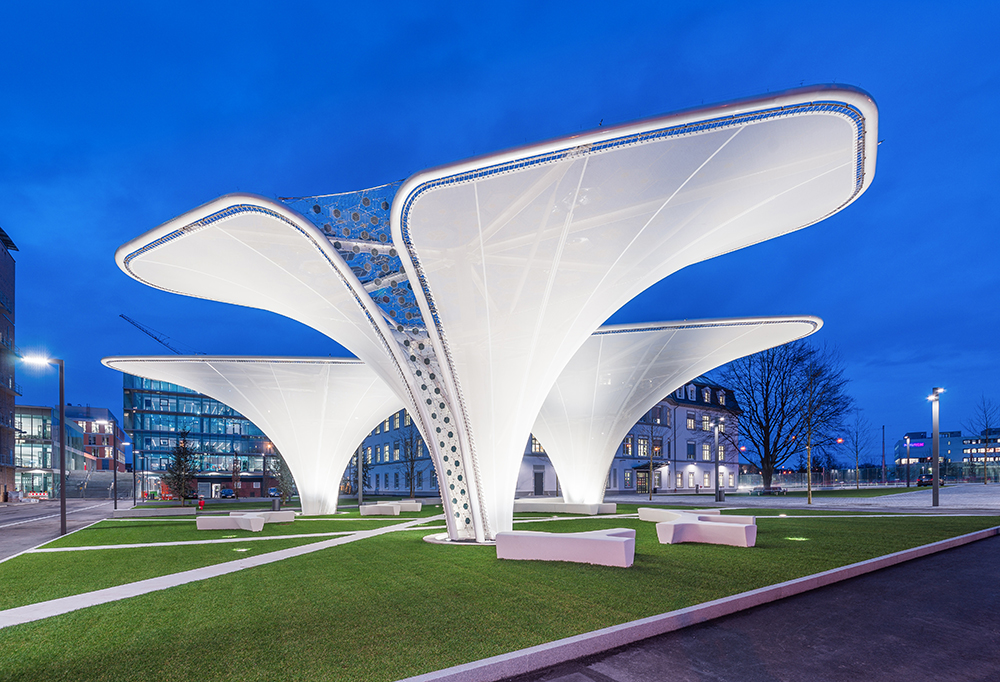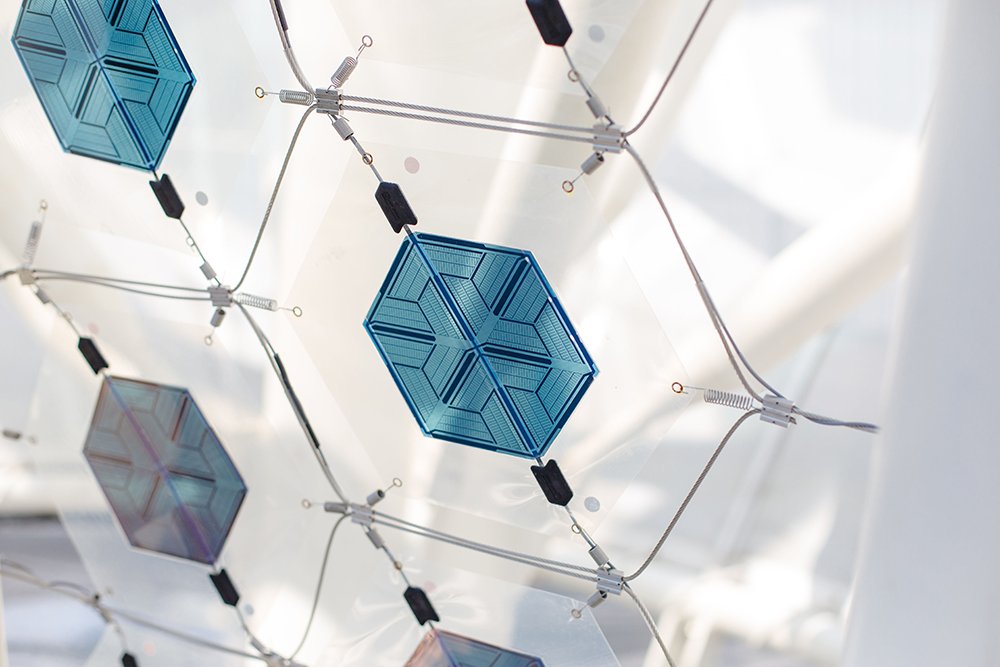David Müller:
Hi Adel! Do you remember the solar trees at the 2015 EXPO? We bought three of them, which were recently installed in front of our Innovation Center in Darmstadt.
9:20 AM
David Müller sends a picture.
Adel El Gammal:
Very cool! It’s incredible how building-integrated photovoltaics have developed over the past few years. The solar trees are a prime example of this – they show what’s possible.
9:20 AM
David Müller:
I’m glad you like them! Unfortunately, this technology is still under-used. Especially when you consider how much energy buildings collectively consume...
9:21 AM
Adel El Gammal:
I agree; responsible for about 40% of total CO2 emissions in the EU, most buildings today are anything but climate-friendly.
9:21 AM
David Müller:
There’s a lot that could be done to improve their energy footprint. For instance, we could save energy by insulating buildings better, or even by enabling them to produce their own heat and electricity.
9:23 AM
Adel El Gammal:
You’re absolutely right! We’ve estimated that, theoretically, building-integrated photovoltaic technologies could cover 32% of the EU’s energy consumption, with individual countries achieving higher or lower levels.
9:23 AM
David Müller:
This approach makes particular sense in a densely populated region such as Europe since it requires no additional surface area. So why do you think we see so few active building envelopes today?
9:24 AM
Adel El Gammal:
Well, the market is strongly influenced by policy, and it’s also dependent on being accepted by society.
9:24 AM
David Müller:
A lot is happening in the political arena, especially in the EU. And research efforts are increasingly focusing on this topic, as is your work with EERA. What’s your take on the situation?
9:24 AM
Adel El Gammal:
It’s true that many of the new EU directives are a step in the right direction. But it always takes a while for these to turn into effective national laws. What’s needed is more political support so that the existing technologies can advance quickly and ultimately take root.
9:25 AM
David Müller:
Yes, unfortunately it’s not something that happens overnight.
9:25 AM
Adel El Gammal:
That’s exactly why I’m encouraging companies such as Merck KGaA, Darmstadt, Germany to stick by the technology and make it better known!
9:25 AM
David Müller:
I think it’s very important for society and in particular the construction industry to embrace building-integrated photovoltaics – what barriers do you foresee here?
9:25 AM
Adel El Gammal:
The design, for instance. Many architects’ first thought is of the traditional style of photovoltaic modules, which isn’t exactly appealing.
9:25 AM
David Müller:
You’re right, architects often see it as a penalty when they’re instructed to incorporate PV modules. And architects are the key decision-makers in most construction projects.
9:25 AM
Adel El Gammal:
Even though the technology offers many exciting design possibilities, it seems word has not yet got around.
9:25 AM
David Müller:
Unfortunately not! That’s why we’re trying to engage the industry in a dialogue on organic photovoltaics and offer architects a wide range of design options.
9:25 AM
David Müller sends a picture.
Adel El Gammal:
Well, I’m sold on the design and application possibilities. But what about performance and cost?
9:25 AM
David Müller:
In terms of performance, we’ve made a lot of progress and there’s more still to come – our researchers have got a number of new materials up their sleeve! The latest projects not only look good, but also now pay for themselves. However, with the costs there’s plenty of room for improvement – the market’s still very young.
9:25 AM
Adel El Gammal:
And what about its future?
9:25 AM
David Müller:
I’m very optimistic. In principle, the printing process is simple and cost-effective. And, unlike traditional PV modules, it takes very little energy to produce the organic photovoltaic elements.
9:25 AM
Adel El Gammal:
This will definitely be an important point going forward. Hopefully the industry will keep the kettle boiling and continue to invest in this area. The risk with such a new technology may be high, but I believe it will pay off!
9:25 AM
David Müller:
I think, as a large company, we can help to really advance this technology. My colleague Hannah, for instance, recently had the great opportunity of speaking about organic photovoltaics at a TED event.
9:26 AM
David Müller sends a video.
Adel El Gammal:
A TED Talk’s definitely a great way to get people interested in a subject – I’ll take a look now! We’ll definitely stay in touch!
9:27 AM
David Müller:
Absolutely! Talk soon, Adel.
9:28 AM
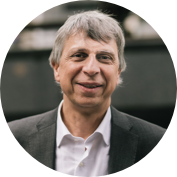
Adel El Gammal
Born in:
Brussels, Belgium
Joined EERA in:
2016
Education:
Masters of Engineering, Business Administration and Environmental Management, Université Libre of Brussels (Belgium) and INSEAD (France)
Focus areas:
- Identifying the technological possibilities of photovoltaics, in particular BIPV
- Building societal and political buy-in for new technologies
- Increasing EU alignment in clean energy research and accelerating “Lab to Fab”, for example transfer of knowledge from research to industry.

David Müller
Born in:
Munich, Germany
Joined the company in:
2005
Education:
PhD in Chemistry (OLEDs), Ludwig Maximilians University in Munich
Focus areas:
- New photovoltaic technologies
- Optoelectronics
